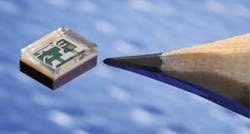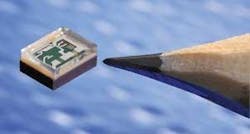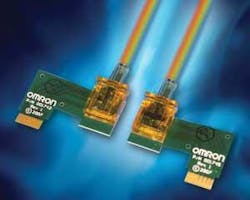by Stephen Hardy
Optical component suppliers in large part can thank video�or, more precisely, the bandwidth and data rate requirements that IPTV, video-on-demand, telepresence, and other hot video-based services demand�for last year�s upturn in revenue. But for the component niche as a whole, the rising tide of video over carrier and enterprise networks won�t be enough to float all boats. That�s why a new generation of specifications for high-speed video transmission in home networking, signage, aeronautics, and other markets has attracted attention. A growing number of optical communications component vendors think they have the right technologies to address what promises to be a variety of high-volume applications. The problem, they say, is figuring out how these unfamiliar markets operate.As the number of bits per pixel such connections must support increases, the ability of copper-based cabling to keep pace, even over a few meters, has come into question. Several of these standards do not address demands from content providers for security features that would hinder pirating. For these reasons, most of the sources contacted for this article describe interfaces such as DVI and VGA as legacy technology without much future. Increasingly, these sources say, two connectivity standards will begin to dominate consumer, signage, and related applications: optically enabled HDMI and a new standard, DisplayPort.
HDMI (www.hdmi.org) should be familiar to anyone who has purchased a high-definition television set. DisplayPort (www.displayport.org) is a potentially competing standard that is finding favor outside of the home video marketplace, particularly among PC and digital signage vendors. The standard has two primary advantages over HDMI, say observers: It better addresses a wider range of applications (including scalability concerns) and it�s an open standard, which means its use is royalty free.
HDMI and DisplayPort also have some fundamental attributes in common. For example, they allow some flexibility in terms of how control channels are handled and will support content security features, with High-Bandwidth Digital Content Protection (HDCP) becoming the de facto industry standard methodology. They are based on multichannel transmission (but could work serially) and�most winningly from the perspective of the optical component community�are specified to support gigabit transmission rates.
They also promise demand volumes that far surpass those of the carrier and enterprise markets. And the marriage of gigabit speeds and high volumes looks like a match made in heaven to a number of optical engine suppliers, who appear ready to move into these markets from a variety of technological angles.
There are two basic ways to handle multichannel transmission optically: CWDM and parallel optics. Omron Electronic Components LLC (www.components.omron.com) has already adopted its CWDM transmit and receive optical subassemblies (TOSA/ROSAs), specifically its SX4 and new SX51, for the video market, according to Martin Smith, product manager of broadband components at the company. Omron has already enjoyed success selling devices for DVI extenders (as well as for KVM extenders) and sees HDMI for home networking as its next market opportunity, although Smith says the company also is watching DisplayPort closely.
IntexyS Photonics Inc. (www.intexysphotonics.com) also is looking at HDMI and DisplayPort�as well as USB 3.0, which will support gigabit speeds�as a potential application for its optical packaging technology. According to Terry Thomas, vice president of sales and marketing worldwide for IntexyS, the company likely would use a parallel approach toward HDMI. Since the company already has provided devices for multichannel applications at 5 Gbits/sec, it has the technology to support both HDMI and DisplayPort markets, Thomas believes.
However, multichannel transmission isn�t necessarily required in HDMI and DisplayPort applications, points out Marek Tlalka, vice president of marketing at Luxtera (www.luxtera.com). While the company has demonstrated a DisplayPort active optical cable based on a parallel architecture at the most recent Consumer Electronics Show�and plans to show an updated version of the prototype at this month�s Infocomm/NXTcomm event�Tlalka notes that a serial approach is technologically feasible. It may also provide cost benefits, since it would require only a single fiber and transmitter, for example. However, some sort of multiplexing and/or converting would be required, Smith points out.
Regardless of the technology behind the optical transceiver, most sources agree that multimode fiber will fill most of the cables; Luxtera, however, has long touted the ability of its technology to work with singlemode fiber. Smith says that Omron has tested its TOSA/ROSAs with various grades of multimode fiber, but plans to counsel its clients to use OM-3 for maximum performance. �We have customers in the aerospace market and other places that have specifically requested plastic fiber, and we�re testing a variety of plastic optical fiber now,� he adds.
The products, particularly if they come in active optical cable format, will have to meet consumer price levels as well. �I believe you�ve got to sell a short-reach HDMI cable for, like, $30,� offers Thomas. Smith adds that Omron executives are pondering a forward-pricing strategy to increase demand for its optical subassemblies.
In addition to multiple technology paths, component suppliers looking at the space have to sort through different paths to market. The similarities between DisplayPort and HDMI offer both opportunities and challenges. �HDMI and DVI are very similar. If you have HDMI, you basically have DVI support in a PHY. And at the same time, HDMI and DisplayPort are also similar when you talk about data rate and the number of lanes,� says Tlalka. �Basically, we�re applying the same optical engine to all three of them and just changing the electrical interface slightly.�
So companies need to decide which interface they want to support first, then decide which application to tackle first. Luxtera appears primed to address DisplayPort applications in the signage market, with product introduction targeted for the end of this year. However, Tlalka admits that the company is still deciding whether it should sell its technology to makers of extension boxes, partner with display manufacturers (who have expressed a desire to support remote control of their displays), or go to market directly with a Luxtera-branded product.
Thomas says that IntexyS wants to offer an active optical cable�but hasn�t quite decided how to do it. The company does have a production strategy in place. �We�ll partner with a manufacturer that would mass produce those and then take it to market,� Thomas says, adding that the company is already in talks with such manufacturers. The tricky part, Thomas admits, is deciding how to sell the resulting product. IntexyS could partner with a distributor, but �that means you�re giving away gross margin,� he laments.
A number of companies are mulling the same issues, particularly those that have already jumped into the active optical cabling market for data center applications. For example, Finisar (www.finisar.com) lists HDMI and DisplayPort among the targeted applications for its LaserWire offering.
Meanwhile, Reflex Photonics (www.reflexphotonics.com) president and CEO Gary Moskovitz, whose company recently announced its own active optical cable offering based on its �Light on Board� technology, says he also sees an opportunity in DisplayPort, HDMI, and USB 3.0 applications. However, he says that the company is unlikely to actively address these markets until next year; when Reflex Photonics does turn its attention in these directions, it is likely to do so through license agreements rather than marketing products directly to consumers, Moskovitz reveals.
While a decision on how to approach a market that is probably outside of a company�s direct experience is as difficult as it is essential, the promise the consumer, signage, and related spaces offer should make the effort worthwhile, sources agreed.
�We�re in tough economic times, depending upon who you talk to, but the users of higher-end video seem to be continuing to forecast significant growth to us, significant potential out there,� Smith concludes. �So we�re anticipating explosive growth in this market.�


